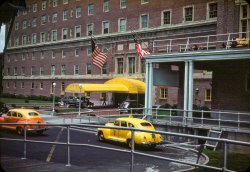
MAY CONTAIN NUTS

Search Shorpy
SHORPY ART

Framed or unframed, desk size to sofa size, printed by us in Arizona and Alabama since 2007. Explore now.
Join and Share
Ad-Free Shorpy
Shorpy is funded by you. Patreon contributors get an ad-free experience.
Learn more.

Recent comments
- Heckuva remote control!
- Sometimes — Things Go Bump!
- I SEE THE LIGHT
- Union Switch and Signal Company
- Get That Light Out Of My Eyes
- Eggs. Eggs. Eggs. The Egg Man is Here!
- Foreboding caption
- Famous Hollywood faces
- Not just S&P
- re: Those things in the jar
- Up In Smoke
- Medical Smoking
- Quick fix
- A Quink Comment
- If You’re Like Me, Never
- Delivering the News
- U.S.A.
- S&P
- 1940 Zenith radio model 6G601
- Quality goes in before the name goes on!
- Snazzy skirt
- Carbon Arc Lamps
- Illuminate us
- I remember it well
- I can't prove it
- Complicated then, forgotten now
- Bryan-Stevenson
- Skinny is as skinny does
- How do you rest in peace
- Riding the footboards
Member Photos
The Shorpy
Print Emporium
Print Emporium
Search Shorpy
Search results -- 30 results per page
- Vroom: 1949
- ... in an Austin pedal car circa 1949. From a set of 35mm Kodachromes I acquired in northern New Jersey. Here is another view. View ... Posted by historic52 - 12/16/2012 - 8:10am -
![Vroom: 1949 Young motorist in an Austin pedal car circa 1949. From a set of 35mm Kodachromes I acquired in northern New Jersey. Here is another view. View full size.
BeautifulAnd, if I remember correctly, the full size Austin was just a tad larger. That is a dandy and one very lucky kid.
Lucky Kid!What a beauty. Looks like the trunk lid is operational too. The tires look pneumatic, almost real car like.
You can never be too carefulI see they blacked out the license plate for privacy protection.
Just like the one Dad drives!Wow, that kid must have been on cloud 9 to get something like that!
All metal, real tires, real paint and chrome, compare that to the all plastic, no sharp edges boring junk today.
Downside is it must have weighed a ton.
Any Pedal Car collectors out there who can give us a ballpark value on that car today?
Beyond my folks' budgetThis looks like an expensive toy and sure enough, according to the pedal cars page at austinworks.com: "The J40 sold for 27 pounds plus 6 pounds added purchase tax, while the Pathfinder cost 20 pounds plus 5 pounds purchase tax. At the time the average working man would have to save 2 or 3 weeks full wages to buy a J40."
[Prior to the 1949 devaluation of the Pound Sterling the exchange rate was approximately £1 = $4; after devaluation, £1 = $2.80. - tterrace]
The J40 StoryThe J40 was manufactured in the UK by the Austin company. There is a full history here.
Austin J40 carsThe Austin J40 is something of a British motoring institution. The pedal car was built at the Austin Junior Car Factory in Bargoed, South Wales. This dedicated factory began Austin pedal car production in 1949, with the plant funded by the British Government. It was run on a not-for-profit basis, purely for the employment of disabled coal miners, with 250 men assembling both the J40 pedal car, plus the racy Pathfinder, loosely based around a single-seater competition Austin Seven. Production ended in 1971. Values vary depending on condition, between 1 and 3,000 pounds sterling.
WowI remember as a kid looking through JC Penney, Montgomery Ward, and Sears catalogs dreaming of owning a pedal car. Being one of seven children I knew the closest I would ever get was whatever my mind could dream about. That was in the 60's and I don't think I ever saw one this beautiful. Heck I would have easily traded away 2 of my sisters for this beauty.
Wow SecondedThat kid grew up in a completely different world than what I knew. I too looked through the Sears and Wards Christmas Edition Catalogs and dreamed of having a cool pedal car. Tonka was as close as I would ever get.
(ShorpyBlog, Member Gallery)](https://www.shorpy.com/files/images/Austinpedalcar2.thumbnail.jpg)
- The Jackson Four: 1904
- ... of his I read that stated that late in life he had shot Kodachromes. He had started with a portable darkroom and wet plates in the ... Posted by Dave - 05/09/2011 - 8:06am -
![The Jackson Four: 1904 Circa 1904. "W.H. Jackson and family. William Henry Jackson with mother Harriet and probably daughter-in-law (wife of Clarence S. Jackson) and grandson Billy (b. 1902)." 11x14 glass negative, Detroit Publishing Co. View full size.
Mona Lisa smile.Wow, that woman in the middle sure knows how to pose for a photo. She just has a certain air about her that has reached across time and space.
Must. resist. urge.to draw a mustache on that baby. His mother is beautiful, she reminds me of Alma Mahler.
A handsome familyCaptured by a good photographer. I particularly like the juxtaposition between grandmother's seams and wrinkles and the baby's smooth skin.
Stuffy, Not FluffyAnd doesn't old W.H. look comfortable in that starched collar?
PossibilitiesDo we think Clarence took the picture?
[Photographer William Henry Jackson was one of the Detroit Publishing Company's founding partners. - Dave]
GenerationsNot a costume historian, but I find it interesting that (to my eye, at least) the grandmother's dress looks MUCH older-fashioned than the daughter-in-law's-- in fact, the closely fitted black silk sleeves and bodice, the lace at the neck, and the obviously wide skirt read as very mid-nineteenth-century to me, vs. the daughter's lace and fuller up-top silhouette.
Ditto the grandma's hairstyle (parted in the middle, smooth wings over the ears) vs. the daughter's pompadour. It's somehow refreshing to think that even Back In The Day there were older people who stubbornly stuck with the personal style that worked for them in their 30s.
Portrait with a differenceNatural light, I suspect, probably from overhead skylight in the studio, plus a high shutter speed, otherwise the baby would show motion blur - note how that hand is frozen in mid-air. Natural expressions result from not having to freeze in place like zombies for the exposure.
William Henry Jackson He would have been 60 or 61 here. He lived another 38 years and died in 1942, at 99.
I was always struck by a biography of his I read that stated that late in life he had shot Kodachromes. He had started with a portable darkroom and wet plates in the early 1870s.
In any format, he is one of the greatest photographers of all time.
(The Gallery, DPC, Portraits, W.H. Jackson)](https://www.shorpy.com/files/images/4a55028a.thumbnail.jpg)
- How to Stand on Your Head
- ... any of those, make use of your big sister.
A pair of Kodachromes shot by my brother on our lawn in 1955. View full size.
... Posted by tterrace - 06/24/2009 - 5:03pm -
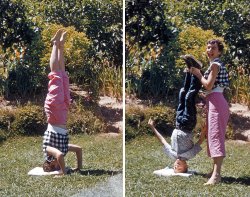
- World's Fair: 1940
- ... at the New York World's Fair in 1940. One of a series of Kodachromes taken by my great-grandfather, who was a photofinisher in ... Posted by jskirsch - 04/11/2015 - 2:19pm -
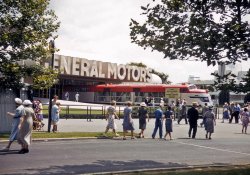
- String Section: c. 1939
- ... The original is fairly typical of how the earliest Kodachromes faded before processing changes resulted in the kind of color ... Posted by Ken - 09/08/2011 - 6:33pm -
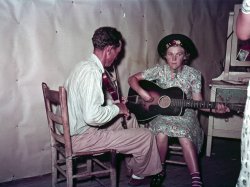
- Godchild: 1963
- ... along with a later Retina I don't recognize. I've got his Kodachromes from the '40s on, along with some earlier Autocolor and, I think, ... Posted by delworthio - 09/22/2011 - 8:06pm -
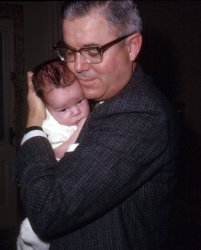
- 1951 Mercury
- ...
Yum! Thank you delworthio for this batch of car Kodachromes! You notice how boring most car colors are these days? White, black ... Posted by delworthio - 09/22/2011 - 3:40pm -
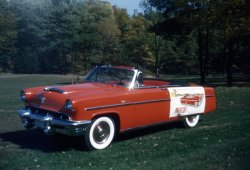
- Crown Restaurant: 1904
- ... Monochrome is an interesting contrast to the Minnesota Kodachromes.
Thank you, Dave, tterrace, and all the Shorpyites for another ... Posted by Dave - 12/22/2014 - 11:09am -
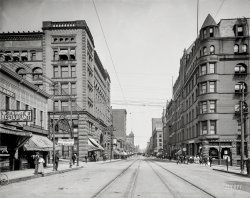
- Having an Ice Time: 1951
- ...
Nice shot Although it is great to see these old Kodachromes, it is bit sad that no one cared enough to retain their family ... Posted by Vintagetvs - 12/09/2016 - 1:39pm -
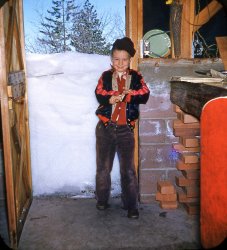
- TV Time: 1961
- ... of that TV or the cloth on the sofas in the Minnesota Kodachromes?
Old style TV remote Nice picture of the old style TV remote ... Posted by rsyung - 01/23/2015 - 7:42pm -
![TV Time: 1961 My sister and me watching TV; College Station, Texas, September, 1961. Sure wish I knew what it was we were watching. The ghostly image is tantalizing but probably not clear enough for a guess. View full size.
Odd entertainmentIt sure doesn't look like the kind of program that would enthrall two youngsters. No cartoons or cowboy movies in your town? No Little Rascals, Three Stooges or Mickey Mouse Club?
[The guy on the left, who's holding a microphone, looks sort of like Ed Sullivan. -tterrace]
Speaker fabricTough call: which was scratchier? The fabric covering the circular speaker at the bottom of that TV or the cloth on the sofas in the Minnesota Kodachromes?
Old style TV remoteNice picture of the old style TV remote on the coffee table - "Johnny, go change the program to Channel 8."
Sullivan?I agree it might be Sullivan. Odds are my mom is out of frame and she pretty much determined what was on the tube in the evenings...
What's My Line?I think this shows Dorothy Kilgallen and Bennett Cerf on What's My Line.
[Kilgallen and Cerf sat on opposite ends of the panel. -tterrace]
(ShorpyBlog, Member Gallery)](https://www.shorpy.com/files/images/1205AshburnSept61.thumbnail.jpg)
- Peaches, mid-1940's
- ... masterpieces represented by the 4x5 government-sponsored Kodachromes we've been seeing here, everyday amateur examples like this can ... Posted by bhappel - 07/26/2009 - 6:53pm -
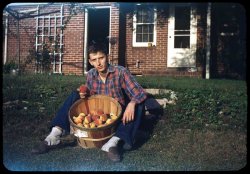
- Dapper 40s Couple
- Grandpa Grimme traveled a lot, and took a lot of Kodachromes with his Argus C3. This was in a slide tray that included a lot of ... Posted by dboynton - 04/06/2013 - 4:19pm -
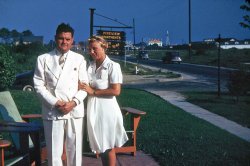
- Family Tree: 1895
- ... you provide to me one of the great cars in the Las Vegas Kodachromes as a reward?
I realize that you might need to contact Jay Leno ... Posted by Dave - 06/28/2015 - 1:05pm -
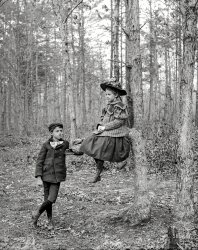
- Mother, Stone Faced
- ... went on a road trip with his mother sometime in the '50s. Kodachromes always follow. View full size.
(ShorpyBlog, Member Gallery) ... Posted by delworthio - 09/22/2011 - 4:32pm -
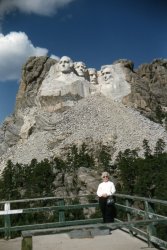
- My Book House: 1949
- From my dad's old Kodachromes comes this one of my mom, Dorothy Porter, in 1949, reading a ... Posted by Roachmotel - 01/13/2017 - 8:23pm -

- Downtown Fort Myers, Florida, 1956
- Another in a series of Kodachromes taken by my dad in the late 1950s as he traversed the country with ... Posted by rsyung - 08/22/2014 - 6:59pm -
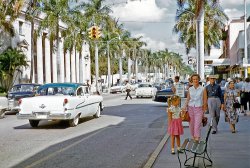
- California Redwoods
- One of many Kodachromes taken by Ruth Cooper. Behind the wheel is Lewis Cooper. View ... Posted by d4xycrq - 02/07/2014 - 7:57pm -
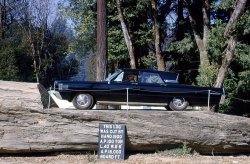
- Noisy: 1955
- ... I show this picture to your friends when you're 13." Great Kodachromes, Hank, all of them!
Ow Did you pinch him and then look ... Posted by HankHardisty - 09/19/2011 - 9:16pm -
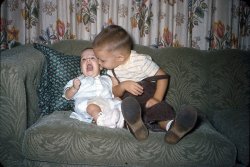
- Newsy Parker (Colorized): 1935
- ... with my use of color after looking at all the Minnesota Kodachromes. View full size.
Nice Job Especially skin tones, in my ... Posted by motobean - 01/13/2017 - 8:25pm -
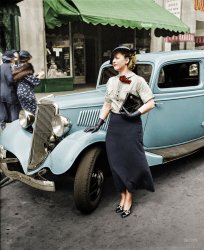
- Austin Pedal Car
- ... car circa 1949, also seen here . From a set of found Kodachromes I acquired in northern New Jersey. View full size.
... Posted by historic52 - 12/16/2012 - 8:10am -
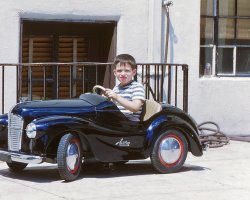
- Dad Miller
- Another of my Father's Kodachromes, this a portrait of his father, Steve Miller. (We've shared that ... Posted by k2 - 05/11/2009 - 10:10am -

- Watch the Birdie: 1957
- Another of my father's 1957 Kodachromes. Taken in my grandparents' yard, Hamburg, New York (south of ... Posted by MarkN - 01/25/2013 - 8:08pm -
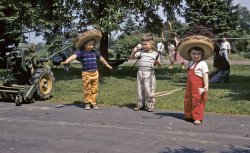
- California Western Railroad
- ... the "Skunk Train" in Fort Bragg, California. One of many Kodachromes taken by Ruth Cooper, Pocasset, MA. View full size.
1965 ... Posted by d4xycrq - 02/07/2014 - 7:57pm -
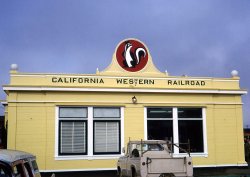
- Straw Hat: 1956
- ... that family farm near Blandinville, Ill., where these 35mm Kodachromes were taken.
I am examining the inside of my grandfather's straw ... Posted by HankHardisty - 08/09/2010 - 8:17am -
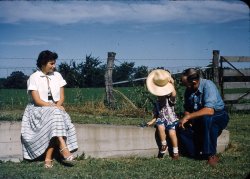
- North State St., Chicago: 1949
- Another in the group of found Kodachromes. Great representation of a busy city street. The El in the far ... Posted by Deborah - 02/28/2014 - 8:31pm -
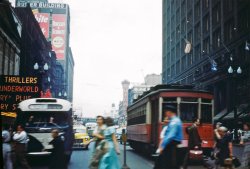
- Swinging: 1956
- ... as being from that back yard. Another of many 35mm Kodachromes. View full size.
(ShorpyBlog, Member Gallery) ... Posted by HankHardisty - 06/01/2010 - 10:27am -
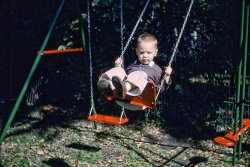
- Cape Cod Canal
- ... Cod Canal, Bourne, Massachusetts. One of many Ruth Cooper Kodachromes. View full size.
(ShorpyBlog, Member Gallery) ... Posted by d4xycrq - 02/07/2014 - 7:57pm -
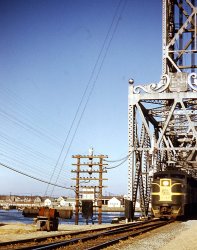
- First Steps: 1949
- Such a sweetie pie. Part of a set of Kodachromes (dated 1949-50) recovered and scanned. Location is near the Jersey ... Posted by Deborah - 02/21/2014 - 8:21pm -
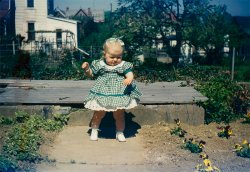
- Sittin' at the Ritz: 195x
- One of my grandfather's Kodachromes from the 1950s while he was in Atlantic City for a convention. This ... Posted by KAP - 03/09/2018 - 7:33pm -
